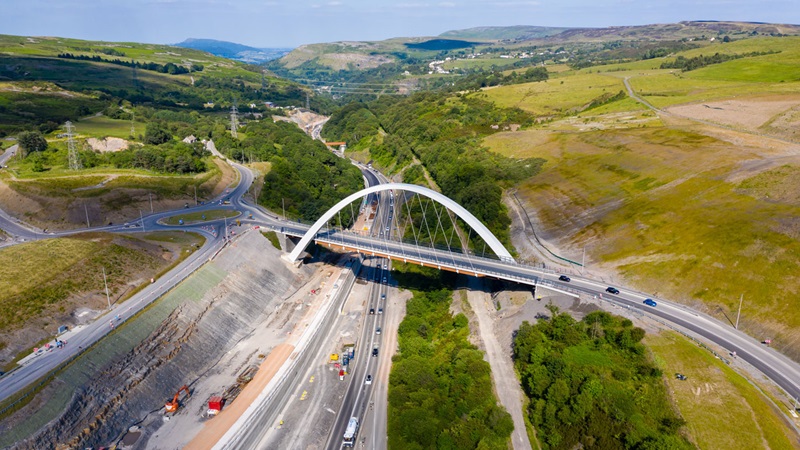The good the bad & the underwhelming
In last week’s underwhelming Budget there was no ‘rabbit-in-the-hat’ policy announcement, with the Conservatives having trailed all policies in advance. As a result, many have been left wondering, “So what?”.
To compound matters, the Budget came hot on the heels of the publication of the Analysis of the National Infrastructure and Construction Pipeline 2024 report, which was also met with a tepid reaction.
While the intention of the report was to provide confidence across the industry, the pipeline has done little to boost enthusiasm, with the details failing to capture the imagination. What’s more, with trust severely dented by the protracted decision-making around HS2, many will be taking the 44-page document with a pinch of salt.
Regardless of recent government decisions, it is a challenging and uncertain time for the sector, and with the Tories not taking last week’s opportunity to give the built environment the shot in the arm it needs, the pipeline paper continues to be a tough sell.
Indeed, there are many concerns about what the next spending review will hold, and with £164bn of planned investment earmarked for programmes between 2023/24 and 2024/25, we must question how a Labour government would use the remaining portion of the £700bn-£775bn of long-term funding. If the decision to cancel HS2 beyond Birmingham taught us anything, it’s that a UK government can and will make decisions that leave the industry reeling. It paints an unclear picture that does not appeal to investors.
Alongside these challenges, the numbers within the report do little to boost confidence. The vast majority of spending comes from a relatively small group of clients, leading to obvious problems for firms not working with these organisations.
Given construction’s low margins and ongoing insolvency problems, until work is confirmed, many firms will be cautious of looking to the future. Where major programmes are live – like HS2 and Hinkley Point C – opportunities to win new work are becoming increasingly scarce and, even more disappointingly, large schemes such as Sizewell C, which are earlier on in their lifecycle, are missing figures. In the case of the £25bn-a-year electricity-generation plan, there’s a distinct lack of detail. This may be an unavoidable reality, but it does little to help firms invest.
On the good side, though, one encouraging element of the paper is the growth in modern methods of construction (MMC). In 2021, the first two years following the report’s publication were due to see £40.6bn of projects involving MMC, but this has now risen to £64.7bn. The growth is less impressive as a share of programmes, only increasing from 35 to 39 per cent, but this data does underscore a pick-up in usage, related to greater recognition of the benefits.
Inclusion of MMC data is, without doubt, a positive development, but there is room for improvement. Currently the data only shows whether a project is utilising MMC, not how much spending goes on it. For the industry to get a true sense of the value MMC can bring in terms of cost saving, productivity and safety, this granularity is needed.
This need is thrown into even sharper focus when considering the paper’s workforce-demand analysis. It suggests the pipeline will involve more than 400,000 construction jobs in the next two years, accounting for 20 per cent of all jobs in the industry. Skills shortages are a widespread problem, with the greatest scarcity among labourers, civil engineers, surveyors, plant operators and scaffolders. Whether MMC can reduce these requirements, and how the industry will attract and retain workers, are fundamental issues to the successful delivery of the pipeline. Competing internationally against plans such as the Inflation Reduction Act in the US and the giga-projects of the Saudi Vision 2030 only makes meeting demand for skilled workers tougher.
It is unquestionable that setting out a future pipeline is helpful, but the political context hasn’t allowed for the Infrastructure and Projects Authority (IPA) to do the work it needs to.
The IPA, along with the National Infrastructure Commission, has been a fervent ambassador for our industry, but it’s hamstrung, and despite making the best of the situation, on this occasion the report falls short of the mark. It’s unable to tackle construction’s biggest structural problems. The high-level references to government documents on planning, and brief discussion of MMC and skills shortages, only showcases the need for more joined-up thinking.
Hopefully, come autumn, there will be less uncertainty and the government, whatever colour it may be, can deliver more certainty around pipelines. Confidence will help to drive the necessary wider investment and changes in policy that will lead to better training and quicker planning outcomes. Many of the challenges facing the sector are interconnected and solving one in isolation puts greater pressure on the others. Ultimately, if we don’t fix planning issues and skills shortages, this large pipeline will prove undeliverable.
This article was first published by Construction News.









